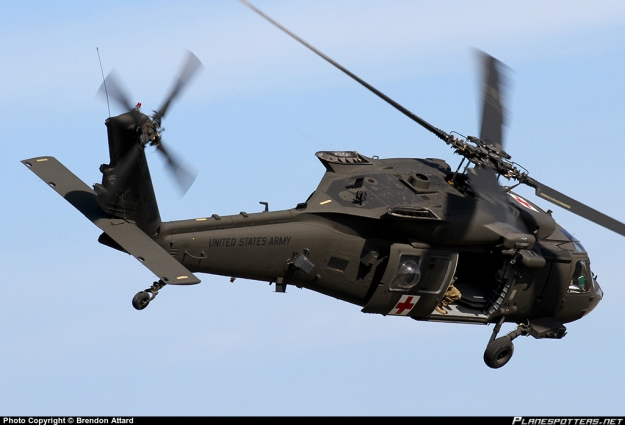Flight Ready: Ensuring Ideal Condition for Your UH 60 Helicopter
Flight Ready: Ensuring Ideal Condition for Your UH 60 Helicopter
Blog Article
Recognizing the Mechanics and Design Behind Uh 60 Helicopters
The UH-60 helicopter, generally known as the Black Hawk, stands as a pinnacle of modern rotorcraft innovation, symbolizing a blend of robust engineering and elaborate auto mechanics. As we peel back the layers of the UH-60's style, a world of elaborate systems and precise engineering comes to light.
History of UH-60 Helicopters
The history of UH-60 helicopters traces back to the late 1970s when the United States Military looked for a flexible and sophisticated utility helicopter to replace its aging fleet. In feedback to this demand, the Sikorsky Aircraft Company developed the UH-60 Black Hawk helicopter. Presented in 1979, the UH-60 rapidly ended up being a staple in military procedures because of its impressive capacities.
The UH-60 was made to succeed in a range of missions, consisting of troop transportation, clinical emptying, electronic war, and special procedures. Its ability to adjust to various roles made it a valuable possession to the U.S. uh 60. Military and other army pressures worldwide
Over the years, the UH-60 system has gone through numerous upgrades and variants to improve its efficiency and keep rate with progressing mission demands. These helicopters have seen extensive solution in conflicts such as the Gulf Battle, Afghanistan, and Iraq, showcasing their reliability and adaptability in diverse operational settings. The UH-60's abundant history is a testimony to its enduring tradition as a top utility helicopter.

Engine and Power Systems
Utilizing innovative propulsion modern technology, UH-60 helicopters are outfitted with innovative engine and power systems to make sure optimal performance and reliability in a range of functional situations. The UH-60, typically known as the Black Hawk, is powered by two General Electric T700-GE-701D engines, each with the ability of supplying up to 1,940 shaft horse power. These turboshaft engines offer the necessary drive for the helicopter to execute its objectives efficiently, including army transport, medical discharge, and fight assistance.

Rotor System and Aerodynamics
How do the blades system and the rules of aerodynamics of UH-60 helicopters add to their functional effectiveness and flight capabilities? The rotor system of the UH-60 helicopter plays a crucial duty in giving lift and propulsion. The UH-60 includes a four-bladed, completely verbalized blades system that permits high maneuverability and stability during trip. This layout allows the helicopter to do a variety of missions, from transportation and clinical emptying to fight operations.
Aerodynamics also play a key duty in the performance of UH-60 helicopters. The streamlined body and rotor blade layout lower drag, enabling the helicopter to achieve greater speeds and far better fuel efficiency. The aerodynamic style of the UH-60 also adds to its capability to run in varied environmental problems, including high altitudes and hot temperatures.
Avionics and Flight Control Equipment

In its elaborate sychronisation with the blades system and aerodynamics of UH-60 helicopters, the avionics and flight control systems develop a crucial network of innovations forming the airplane's functional capabilities. In the UH-60, these systems include digital display screens, interaction radios, GPS navigation, weather condition radar, and autopilot systems.
The flight control systems of the UH-60 are in charge of translating the pilot's inputs into the suitable modifications to the rotor system, making sure secure trip and maneuverability. These systems include hydraulic actuators, servos, and computers that interact to control the main and tail rotors, in addition to other trip control surfaces. By exactly handling the helicopter's flight dynamics, these systems enable pilots to perform a large range of missions, from transportation and search-and-rescue to battle procedures, with accuracy and self-confidence.
Role and Applications in Aviation
The role and applications of avionics and trip control systems in aeronautics are indispensable to making certain the efficient and safe you could look here procedure of airplane, including UH-60 helicopters. Avionics systems in UH-60 helicopters encompass a series of electronic systems that aid in navigating, interaction, tracking, and controlling numerous aircraft functions. These systems include digital display screens, autopilot systems, communication radios, general practitioner navigation equipment, and climate radar. Flight control systems play an important role in navigating the helicopter in the air, keeping security, and guaranteeing precise activities. The fly-by-wire innovation my link utilized in contemporary UH-60 helicopters converts pilot inputs into electronic signals, which are after that interpreted by the flight control computer systems to change the airplane's control surfaces. In addition, these systems integrate safety features such as auto-pilot modes, surface understanding warning systems, and stability enhancement systems to enhance the general safety and functional capabilities of the UH-60 helicopters in different goals, consisting of troop transportation, medical discharge, search and rescue, and aerial firefighting.
Final Thought
In verdict, the UH-60 helicopter is a flexible aircraft with a rich background and progressed engineering. Its engine and power systems, blades system, the rules of aerodynamics, avionics, and flight control systems all work together to make it More Bonuses a trustworthy and effective machine.
In its complex sychronisation with the rotor system and aerodynamics of UH-60 helicopters, the avionics and flight control systems form a crucial network of technologies forming the aircraft's operational capabilities.The trip control systems of the UH-60 are accountable for converting the pilot's inputs into the ideal modifications to the blades system, guaranteeing steady flight and ability to move. Avionics systems in UH-60 helicopters include an array of digital systems that help in navigation, communication, monitoring, and regulating different aircraft features. In addition, these systems incorporate safety and security attributes such as autopilot modes, terrain recognition advising systems, and stability enhancement systems to enhance the general security and operational abilities of the UH-60 helicopters in numerous goals, including army transport, clinical discharge, search and rescue, and aerial firefighting.
Its engine and power systems, blades system, aerodynamics, avionics, and trip control systems all work with each other to make it a effective and reputable equipment.
Report this page